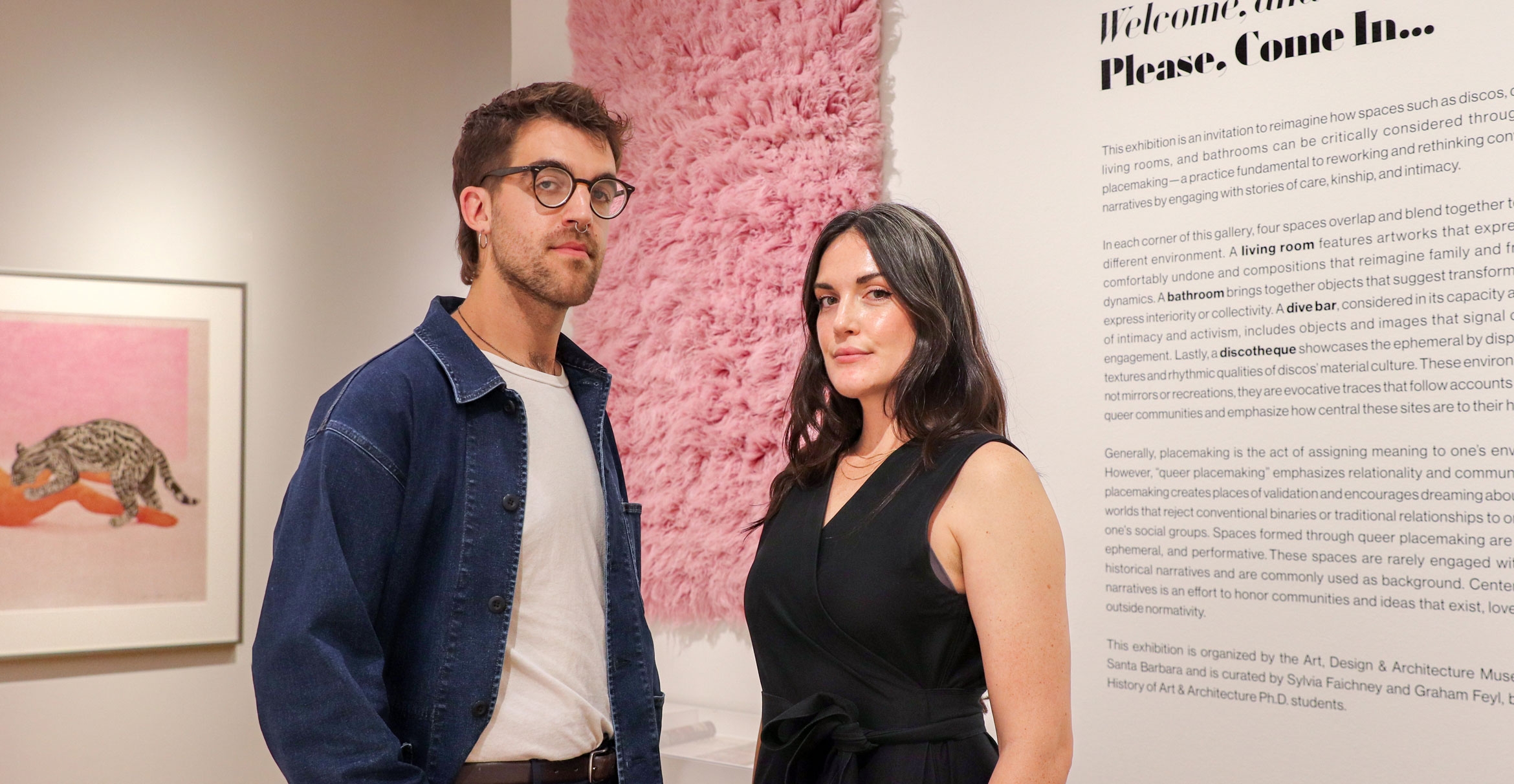
Robert Lazzarini’s 2003 sculpture of a warped porcelain teacup references “spilling the tea” or gossiping with friends; but it also engages with storytelling, creating a sense of home, shared language and queer placemaking.
Through this lens — and through objects such as Lazzarini’s “Teacup” — a new exhibition at the Art, Design & Architecture Museum reimagines spaces such as discos, dive bars, living rooms and bathrooms.
“Within communities that are already marginalized, these spaces are fundamental to ideas of safety, worldmaking and dreaming,” said Graham Feyl, who co-curated the exhibition, “Please, Come In…” (Sept. 23–Dec.17), with Sylvia Faichney; both are graduate students in the UC Santa Barbara Department of the History of Art and Architecture.
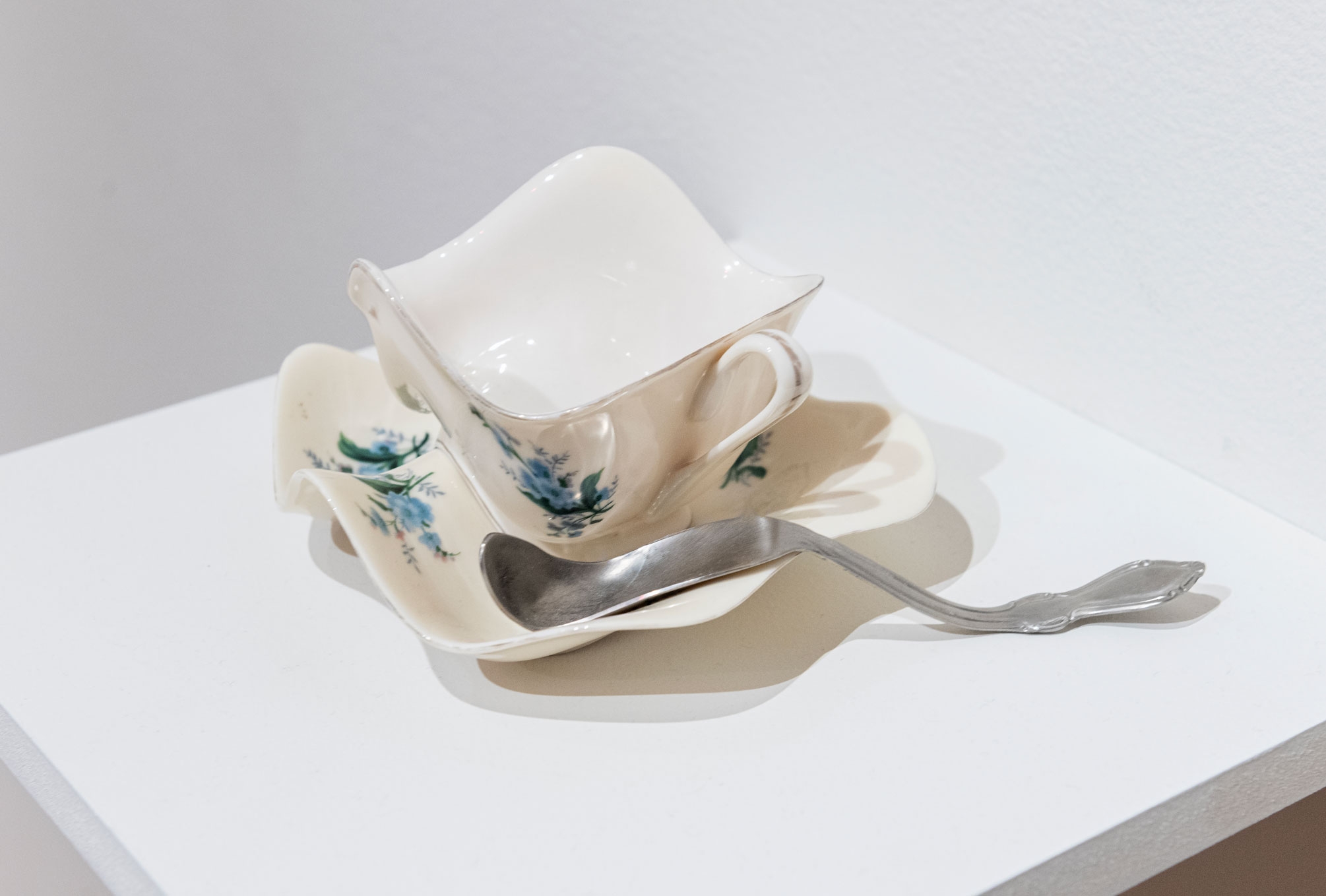
“Placemaking is the act of assigning meaning to one’s environment,” the curators said. “However, ‘queer placemaking’ emphasizes relationality and community. Queer placemaking creates places of validation and encourages dreaming about different worlds that reject conventional binaries or traditional relationships to oneself and one’s social groups.”
Many of the spaces highlighted in the show have been ignored in larger historical narratives or have been used as background. By centering queer narratives, particularly in regards to community and kin, the exhibition exalts “love and care outside normativity.”
Artists and creators exhibited include David Bandy, Nayland Blake, Paul Cadmus, Nell Campbell, Willie Cole, Howard Finster, Les Gundel, Channing Hansen, Lyle Ashton Harris, Peter Hujar, Robert Lazzarini, Peter Meller, Keith Puccinelli, Mel Ramos, Do-Ho Suh, Marc Swanson, Andy Warhol and performers at Finocchio’s Club in San Francisco. The earliest piece in the show is the etching “Two Boys on the Beach #1” by Paul Cadmus, dated 1938.
Works were selected from the museum’s fine art collection with some pieces on loan from the Gay, Lesbian, Bisexual, Transgender (GLBT) Historical Society in San Francisco. A pink shag was acquired for the exhibition by the Art History Graduate Student Association.
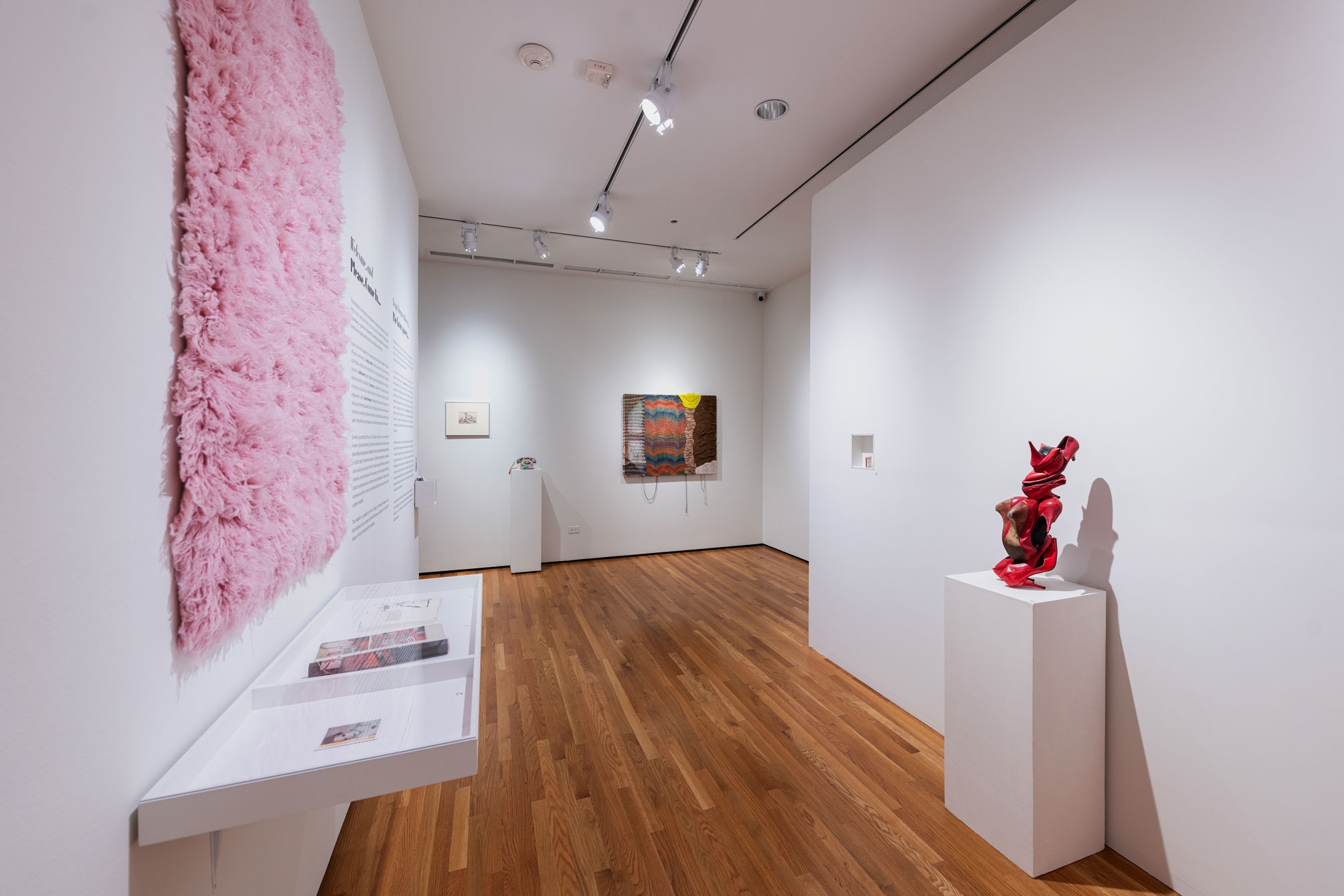
In each corner of the Moir Gallery, four spaces overlap and blend together to evoke a different environment. A living room features artworks that express being comfortably undone and compositions that reimagine family and friendship dynamics. A bathroom brings together objects that suggest transformation and express interiority or collectivity. A dive bar, considered in its capacity as a space of intimacy and activism, includes objects and images that signal collective engagement. Finally, a discotheque showcases the ephemeral by displaying the textures and rhythmic qualities of discos’ material culture.
“These environments are not mirrors or recreations, they are evocative traces that follow accounts shared by queer communities and emphasize how central these sites are to their histories,” Faichney and Feyl write in their exhibition brochure.
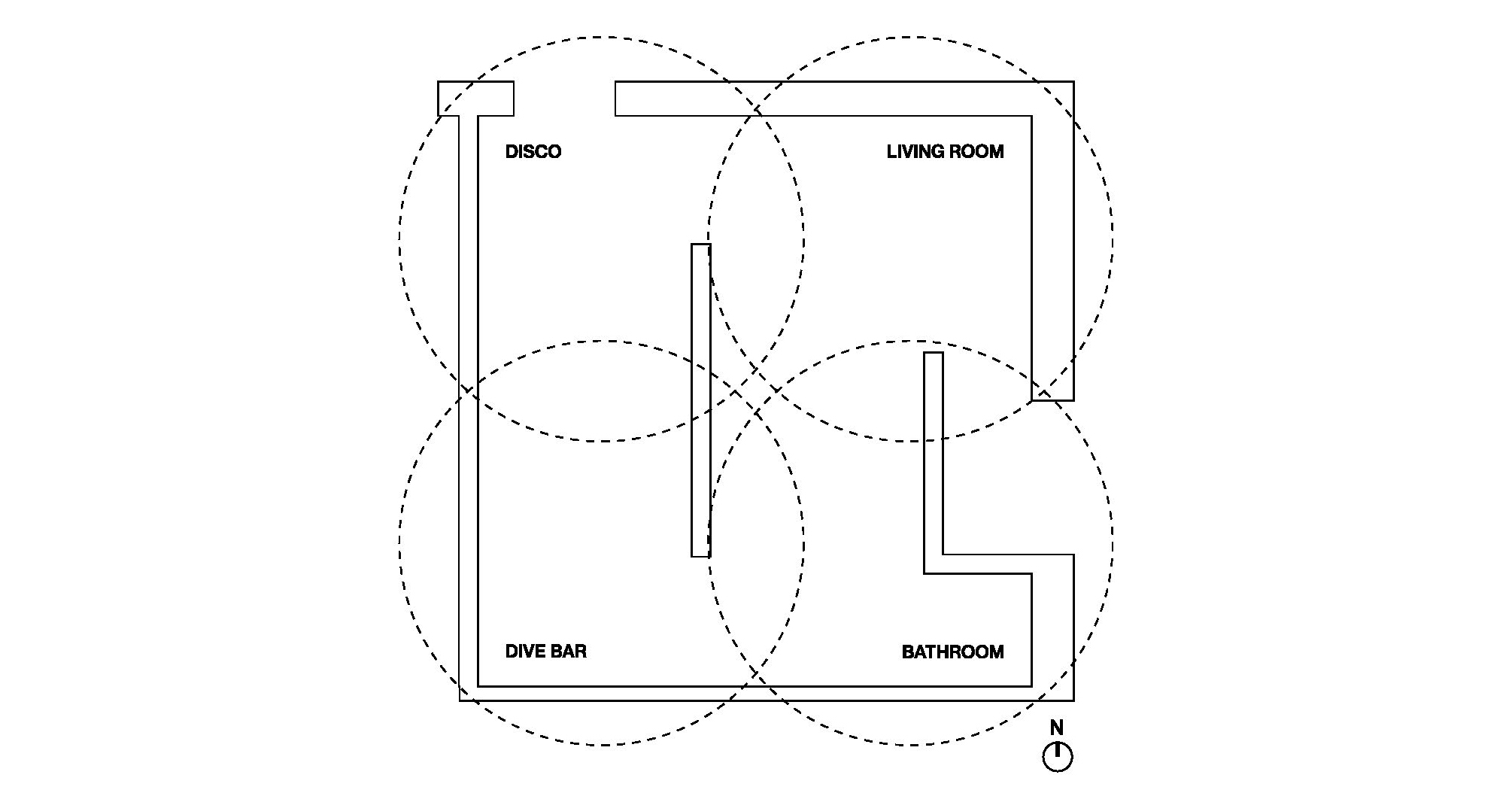
Their respective graduate research lends shape to their curatorial proposal. An architectural historian, Faichney’s research interests include methods and histories of exhibiting architecture, interiors and material culture. Rooted in art history, Feyl, on the other hand, has studied the East Village in the 1980s, particularly in terms of craft, and how it relates to queer and transgender artists. To do this, he looks at materials like faux pearls or dolls made with paper mache embroidery and asks, “How do these materials such as glitter, sequins and faux pearls reflect queer and trans identities or ways of worldmaking?”
When they came together, they noticed a thread that ran through both of their distinct lines of research: They were both interested in experimentation and playfulness. Nothing was “too much” for them to consider critically. “We saw it as critical to engage with these in a larger context,” Feyl noted. Together, they approached curation with the sense that they “wanted to understand that art making was happening in spaces as well as vice versa,” he said.
“We have used queer placemaking as an understanding that these interiors, these communities, have been not only undervalued, but really had to fight for even visibility,” Faichney said. “Visibility is really important, but how did they engage and recreate these spaces too? So things that have been really important for us are objects that articulate — through formal or material characteristics — a type of ephemerality.”
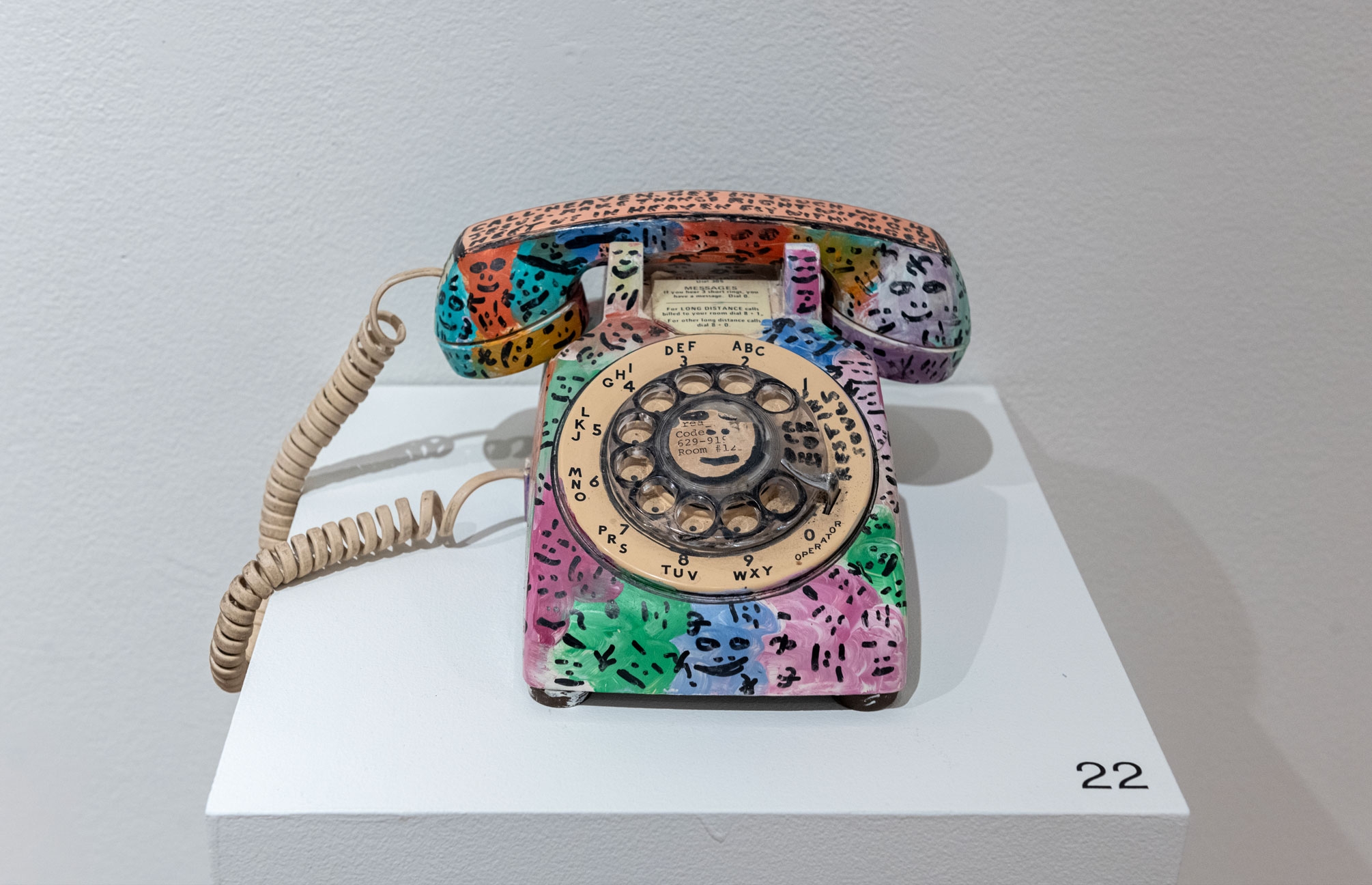
One such object is an orange medicine bottle that contains a set of false eyelashes from the famous San Francisco drag bar, Finocchio’s Club (1936–1999). The lashes are part of the GLBT archive that collected for posterity many objects and ephemera from the club after it closed. When Feyl saw the preserved lashes, he said he got shivers. “Was it overlooked? Was it forgotten? We don't know who wore it, but for us, it's knowing the larger history of the bar that it was in, which was one of the longest running female impersonation clubs — what we now know as drag today,” he said.
“‘Please Come In’ is the culmination of a graduate symposium that Graham Feyl and Sylvia Faichney co-organized in the spring of 2023, which cohered around the theme of queer inclusivity, domesticity, and camp object making,” said Feyl’s dissertation advisor Jenni Sorkin, a professor of art history. “Graham's interest in queer camp, craft processes and amateurism have been consistent since he arrived here at UCSB four years ago. His proposed dissertation project on the San Francisco drag artist and painter Jerome Caja (1958–1995) is an extension of this line of thinking.
History of art and architecture Professor Swati Chattopadhyay said “Please, Come In…” is an open-ended invitation to rethink interiors and interiority. Chattopadhyay, who is Faichney’s dissertation advisor, noted that Faichney's current research in modern architecture in the United States investigates housing on U.S. army bases and how they were fashioned as places of belonging. “In this debut curatorial effort Sylvia (with Graham) set out to think about what a collaborative, inclusive curatorial method of ‘queering’ the museum might be. They remake the museum space itself and open it up to new ways of traversing, experiencing, and placemaking,” she continued.
“I was entirely impressed by the ways in which the curators were able to create a welcoming space that activated our collection through the lens of queer placemaking,” said Orianna Cacchione, assistant director and curator of exhibitions at the AD&A Museum. “The exhibition demonstrates the innovative spirit that students bring to the examination and presentation of our permanent collection, which is a central part of our exhibitions program.”
Several public events have been programmed around “Please Come In…,” including a panel discussion with artist Théo Bignon on Oct. 26; and a virtual curator-led tour on Nov. 11 at the AD&A Museum. A screening of “Paris Is Burning” on Nov. 28, at the Pollock Theater, will be followed by discussion with UC Irvine film scholar Lucas Hilderbrand and moderated by Feyl.
Debra Herrick
Associate Editorial Director
(805) 893-2191
debraherrick@ucsb.edu



